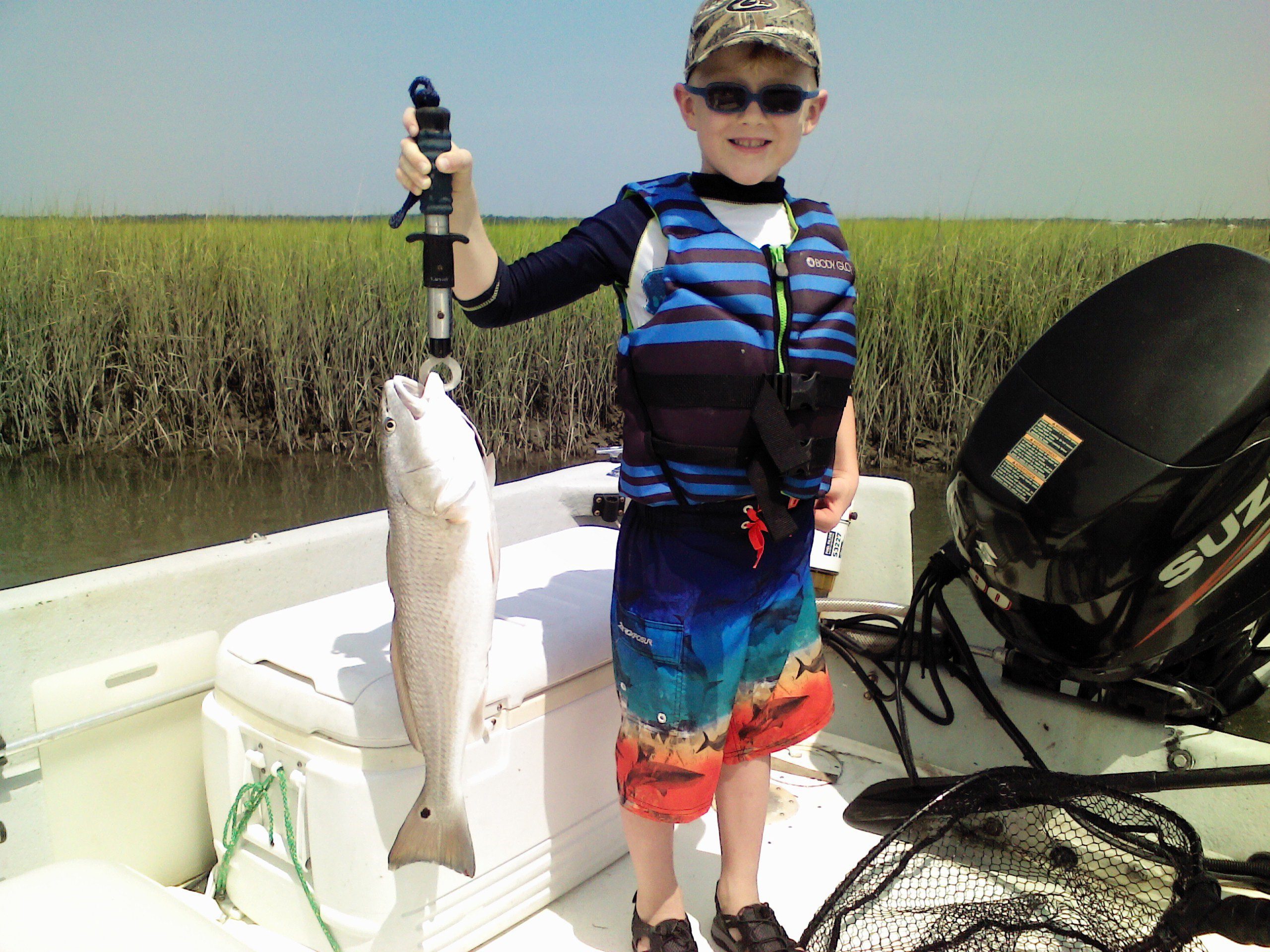Topsail Beach – Jul 5, 2018
Chris, of East Coast Sports, reports that the inshore red drum bite can’t be beat. Look for the reds on oyster rocks and docks.
A decent inshore flounder bite can be taken advantage of by using live bait or a bucktail.
On the surf, plugs are catching red drum near the inlets. There has also been a good presence of sea mullet, pompano, and spots. Sand fleas and Fishbites are the two top producing baits.
Nearshore fishing has been all about black sea bass and snappers. King mackerel and amberjacks have also been biting, in addition to plenty of mahi.
In the Stream, the mahi bite has been on fire.
Mike, of Native Son, reports that finger mullet have moved inshore in large numbers, and the redfish bite has adjusted accordingly. Although the larger schools of reds have broken into pods, the reds can still be found in good numbers. The best bet is to keep moving until running into them. Now is also the best time to fish hard structure like docks and jetties. If you choose to go with live bait, expect to wade through a ton of pinfish and lizardfish before getting that good redfish bite.
Flounder should be holding in the same areas as well, but if they’re your main target, go for deep holes that have bait flowing through them. Usually you can find these holes in main channels and creek mouths.
Recent rain slowed the spanish bite a bit, but it’s been picking back up. The outgoing tide has been the best time to find the fish, and if you come across a school, you can expect to get a lot of bites by throwing diamond jigs.
Kings are still a little deep, but there have been menhaden schools moving down the beach, which means the bite should start to move closer to shore as the bait continues to thicken. Cigar minnows or Drone spoons are both working for the kings, and if you come across a menhaden school, take the time to look around to possibly find a cobia.

Ryan Hales Jr. (age 6), from Wilmington, with a red drum caught in the Topsail area on a pogie.
Chadwick, of South End Anglers, reports that while red drum fishing has still been good, it’s slowed down a little bit over the past few weeks. Docks, oyster beds, grass shorelines, and shallow bays are the best places to look for reds, where Skitterwalks, live and cut bait, and scented soft plastics on Fathom Belly Blade jig heads should entice them to bite.
Spanish fishing has been up and down, but your best chance of getting a bite is to fish Hogy Heavy Minnows and Epoxy minnows. Trolling #1 or #2 planers with 0 or 00 Clarkspoons in gold, pink flash, and electric chicken will do the best job of putting fish in the boat.
Cobia are holding on nearshore structure. Blue Water Candy jigs, Z-Man HeroZ, and live menhaden are all doing a good job of getting bites.
School-sized kings are biting Mag Divers, Drones and planers, and dead bait rigs.
Mahi have moved into shallower water, even coming as close as six miles. They’re biting plugs, dead bait rigs, and live bait. Plenty of sharks, barracuda, and amberjacks are around as well.
Bottom fishing has been productive for sea bass, grunts, vermilions, triggerfish, and grouper on metal jigs, squid, and frozen minnows.
Ray, of Spring Tide Guide Service, reports that red drum and spanish have been the two main targets over the past few weeks. It’s been hard to beat the red bite inshore. Many of the reds can be found in deep holes adjacent to the marsh, where fishing during the falling tide has produced a lot of fish. Carolina-rigged cut menhaden on a circle hook has been producing the majority of fish during these times, but topwater fishing Skitterwalks at high tide in the marsh itself has been getting bites as well.
While spanish fishing has slowed down, fish are still coming in. Pink 00 Clarkspoons on #1 or #2 planers have been responsible for most of the catch, but if you can find blitzing fish, casting white Big Nics will draw strikes.
Marc, of Bad Habit Sportfishing, reports that spanish and blues are biting Clarkspoons trolled along the beach.
The king mackerel bite is strong in 50-70’ of water, where live bait has been productive, but ballyhoo and cigar minnows are getting better numbers.
Amberjacks are hanging on reefs from 50’ on out to the break. There are a few cobia around these spots as well, and they will happily take live bait.
Mahi have been found in the 8-12 mile range, where they’re eating ballyhoo and cigar minnows.
Bottomfish are biting, but it’s been inconsistent. Grouper have preferred live bait, while everything else is still taking the normal cut baits.
The Gulf Stream has been very warm, and unfortunately the bite has been slowing down.

Ben Hull with an 18″ flounder that he caught near Southport on a Gulp shrimp.
Jim, of Plan 9 Charters, reports that the spanish mackerel bite has been excellent outside of the inlet in depths of 20-30’, with plenty of 14-20” fish coming in. A few blues and small kings have been mixed in as well. Spoons (00) on #1 planers and trolling weights are working really well.
Kings, amberjack, and mahi are being caught between 7-15 miles. These fish are falling for trolled dead bait (cigar minnows and ballyhoo, especially) hooked on Blue Water Candy ballyhoo rigs and dolphin weenies.
Tyler, of Seaview Fishing Pier, reports that blues and spanish are biting Gotcha plugs and Diamond jigs in the morning, while black drum are biting shrimp and bloodworms through the night.
Red, of Surf City Pier, reports a good mixture of fish, with both red and black drum, spots, mullet, spadefish, blues, kings (up to 27 lbs.), both speckled and gray trout, and flounder all in the mix.
The spots and mullet are biting bloodworms at night, while the black drum are taking sand fleas and shrimp. Both cut and live baits are catching reds, while the blues and spanish are falling for plugs. Some spanish and the kings are hitting king rigs, and the flounder are eating live mud minnows and the occasional live shrimp.
Nick, of Jolly Roger Pier, reports that bluefish and spanish are biting in the morning, while a few barracuda, jack crevalle, and one 57 lb. tarpon have been caught during daylight hours.
Through the night, mullet, puppy drum, and black drum have been coming up. Squid and shrimp are the top baits.





